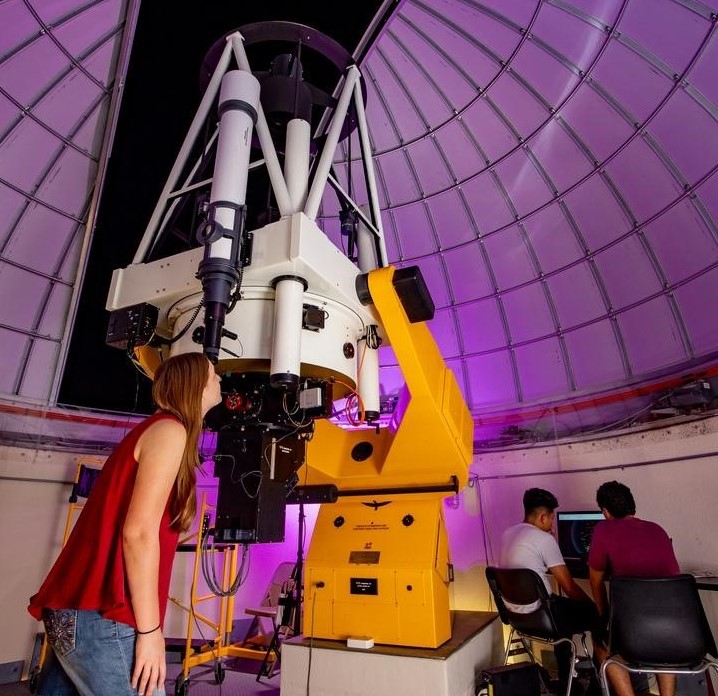Document Type
Article
Publication Title
Astronomy and Astrophysics
Abstract
We present new HST/ACS medium-and narrow-band images and optical Isaac Newton Telescope long-slit spectra of the merging system Mrk273. The HST observations sample the [OIII]λλ4959,5007 emission from the galaxy and the nearby continuum. These data were taken as a part of a larger study of ultraluminous infrared galaxies (ULIRGs) with the aim of investigating the importance of the warm, AGN induced outflows in such objects. The HST images show that the morphologies of the extended continuum and the ionised gas emission from the galaxy are decoupled, extending almost perpendicular to each other. In particular, we detect for the first time a spectacular structure of ionised gas in the form of filaments and clumps that extend ~23 kpc to the east of the nuclear region. The quiescent ionised gas kinematics at these locations suggests that these filaments are tidal debris left over from a secondary merger event that are illuminated by an AGN in the nuclear regions. The images also reveal a complex morphology in the nuclear region of the galaxy for both the continuum and the [OIII] emission. Consistent with this complexity, we find a wide diversity of emission line profiles in these regions. Kinematic disturbance in the form of broad (FWHM> 500 km sˉ¹) and/or strongly shifted (| ΔV | > 150 km sˉ¹) emission line components is found at almost all locations in the nuclear regions, but confined to a radius of ~4 kpc to the east and west of the northern nucleus. In most cases, we are able to fit the profiles of all the emission lines of different ionisation with a kinematic model using two or three Gaussian components. From these fits, we derive diagnostic line ratios that are used to investigate the ionisation mechanisms at the different locations in the galaxy. We show that these line ratios are generally consistent with photoionisation by an AGN as the main ionisation mechanism. Finally, the highest surface brightness [OIII] emission is found in a compact region that is coincident with the so-called SE nuclear component. The compactness, kinematics, and emission line ratios of this component suggest that it is a separate nucleus with its own AGN. At this stage, further observations are required to confirm the dual (or multiple?) AGN nature of Mrk273.
DOI
10.1051/0004-6361/201423540
Publication Date
2014
Recommended Citation
Rodríguez Zaurín, Javier; Tadhunter, Clive N.; Rupke, David S.N.; Veilleux, Sylvain; Spoon, Henrik W.W.; Chiaberge, Marco; Ramos Almeida, Cristina; Batcheldor, Dan; and Sparks, William B., "Extended Warm Gas In The ULIRG Mrk273: Galactic Outflows And Tidal Debris" (2014). Aerospace, Physics, and Space Science Faculty Publications. 163.
https://repository.fit.edu/apss_faculty/163


